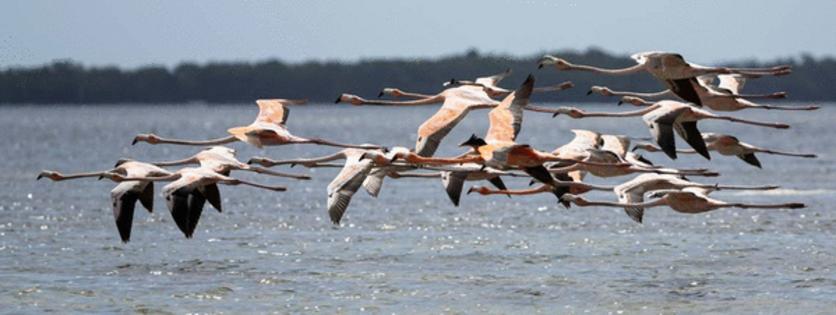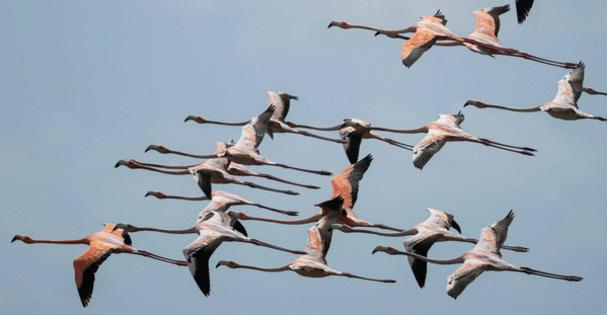Largest group of flamingos in a decade spotted in Florida Everglades
Published in Science & Technology News
The largest group of American Flamingos seen in Florida in more than a decade was recorded late last week.
Mark Ian Cook, a wildlife and scientific photographer, posted on Facebook that he saw a group of 115 flamingos along the coastline of Florida Bay in the Everglades on Friday.
Cook was taking part in an aerial bird survey via helicopter over Florida Bay when the flamingos were first spotted. He said pilot James Davies “pointed out a large group of Roseate Spoonbills in the distance, which isn’t an unexpected sight in this area. Except on closer inspection we realized they weren’t spoonbills, they were a group of 115 flamingos.”
Cook said it is the largest single flock recorded in Florida since 2014, when 147 flamingos were seen together in a water conservation area in the Everglades.
“Unfortunately it’s almost impossible not to spook a large group of flamingos from a helicopter and they rapidly took flight,” he wrote. “But after taking a few images for science and giving a group of fishermen in a flats boat some incredible views as the birds circled around their boat, we left the birds in peace to continue our survey.”
Cook added that a group of 30-or-so flamingos seen in another part of the Everglades earlier appeared to have moved and may have joined with the 100-plus bird group.
Florida’s native flamingo population, thought to be in the thousands, was wiped out in the early 1900s by hunters seeking the birds’ feathers and meat. Prior to 2023, few flamingo sightings were reported in the state.
That changed when Hurricane Idalia created headlines by scattering flamingos from nesting grounds in Mexico into Florida and other places. While most flew home, many decided to stay in Florida. A group at the Merritt Island National Wildlife Refuge has been residing there for more than a year and half.
Julie Wraithmell, executive director of Audubon Florida, told the Orlando Sentinel recently that more flamingos are being seen in Florida, even before Idalia.
“We were increasingly seeing flocks of them in the Everglades in particular. So Florida Bay and in the water conservation areas,” she said. “So we already know that there is some established movement between the breeding areas in the Yucatan and Cuba and South Florida in the winter. ”
While flamingos are being seen more, there has been no documented nesting in Florida since the late 1800s or early 1900s.
“I think we all are eagerly waiting and hoping that that’s going to happen,” she said. “And, you know, it still could. But the first step is the bird staying through the season and being able to make a living here, so to speak.”
--------
©2025 Orlando Sentinel. Visit at orlandosentinel.com. Distributed by Tribune Content Agency, LLC.










Comments